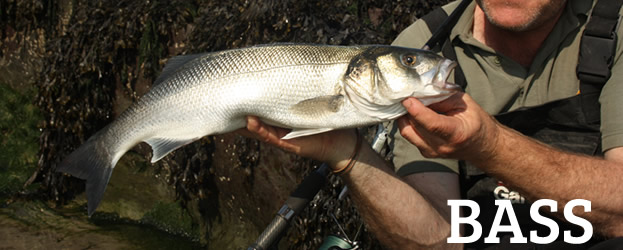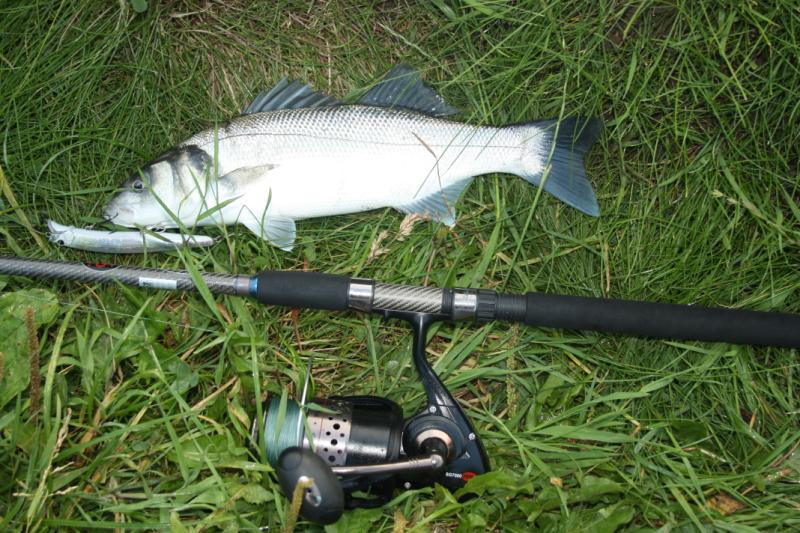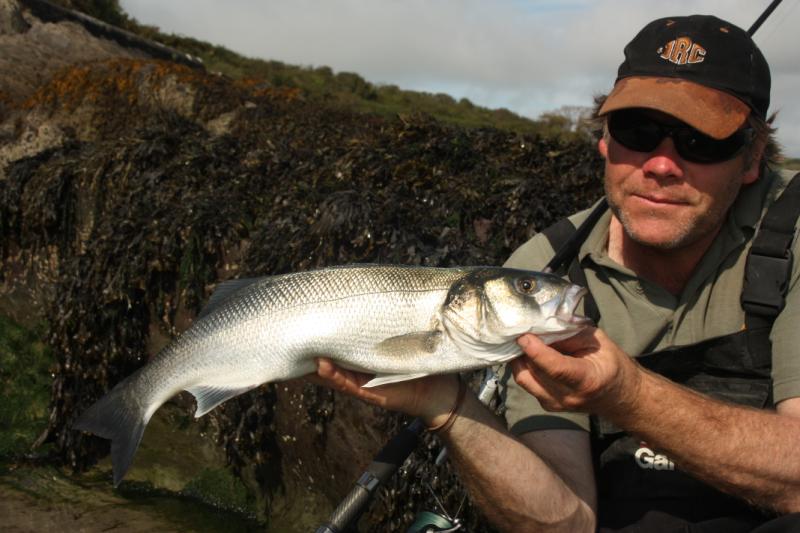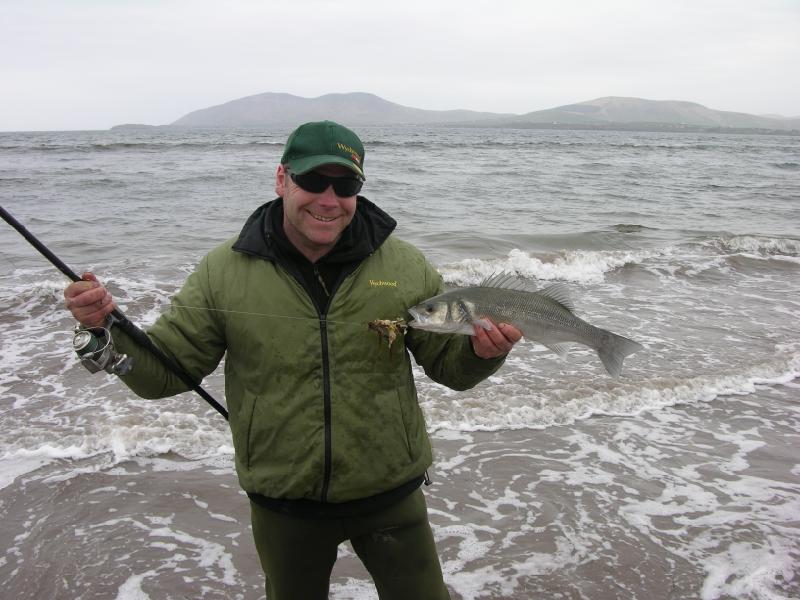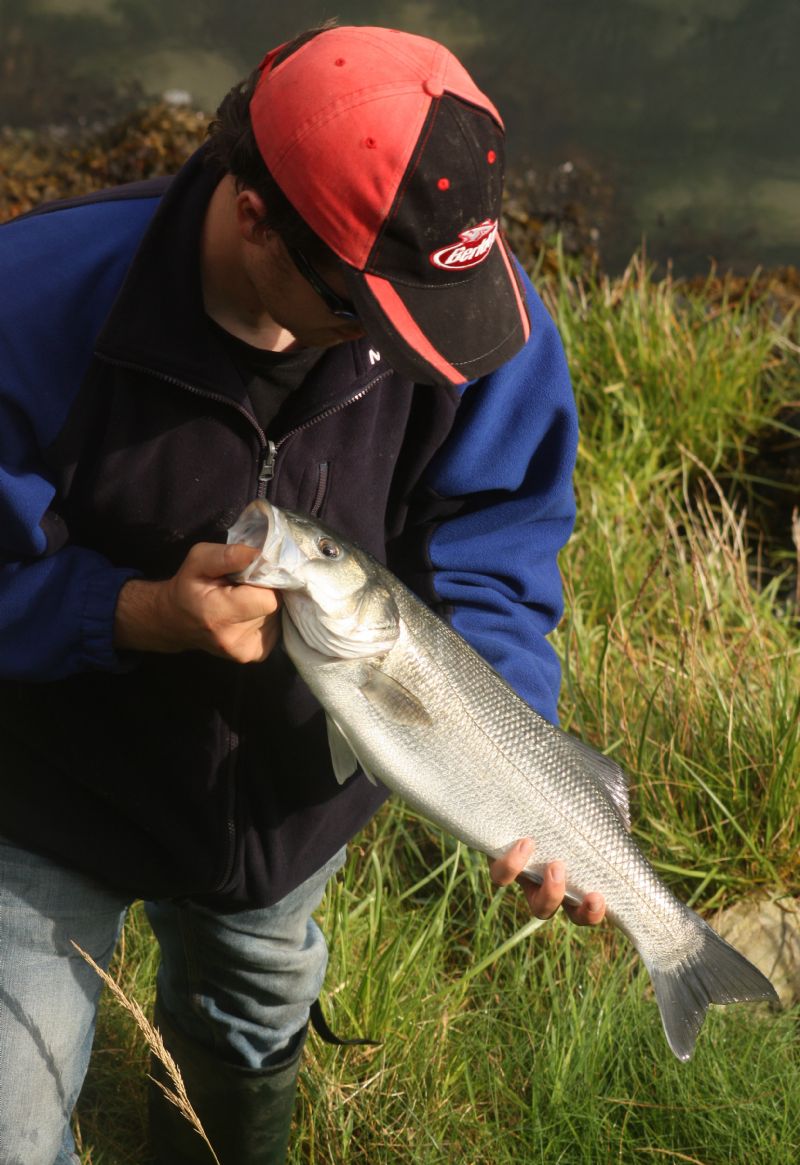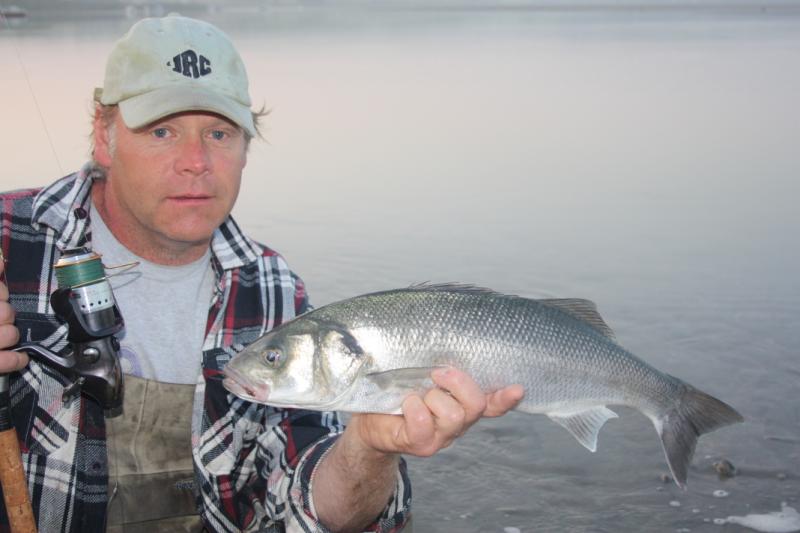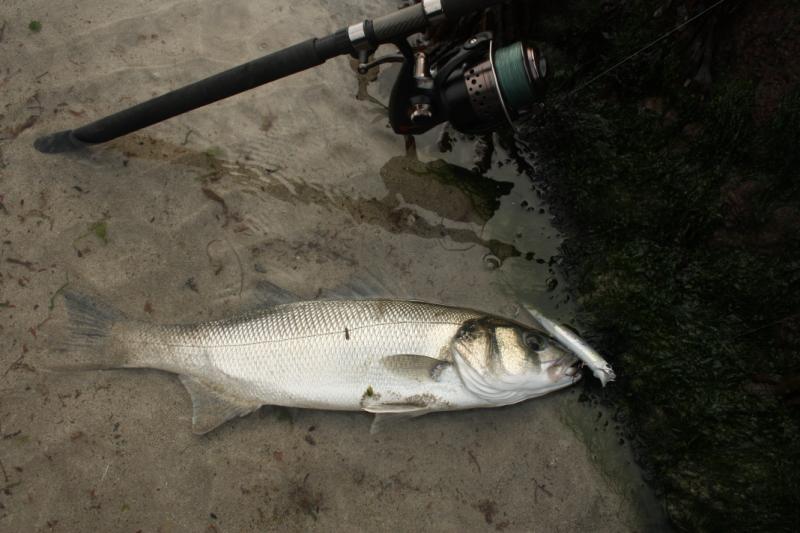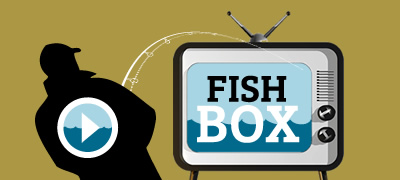Bass
Bass (Dicentrarchus labrax)
Irish Record 17lb 13oz taken on 21.10.2000 by Emmet Naughton at Doughmore Strand.
Specimen 10lbs, or 4.536 kilo or 75cm total length
Identification
This iconic sea fish hardly requires description. It is our only official sport fish, and is targeted here in Ireland by anglers from all over the world. Torpedo-shaped and powerful looking, its cream-white belly gives way to iridescent silver flanks and a dark coloured back, usually black or dark-blue, dark green to black.
The two dorsal fins are large, and quite close together, with the front fin being “spikey” in appearance. Sometimes the dorsal fins are seen breaking the surface as the Bass hunts in shallow water, but this must not be confused with Grey Mullet, whose two dorsal fins are further apart. The gill covers have sharp edges and spines, and the mouth is cavernous.
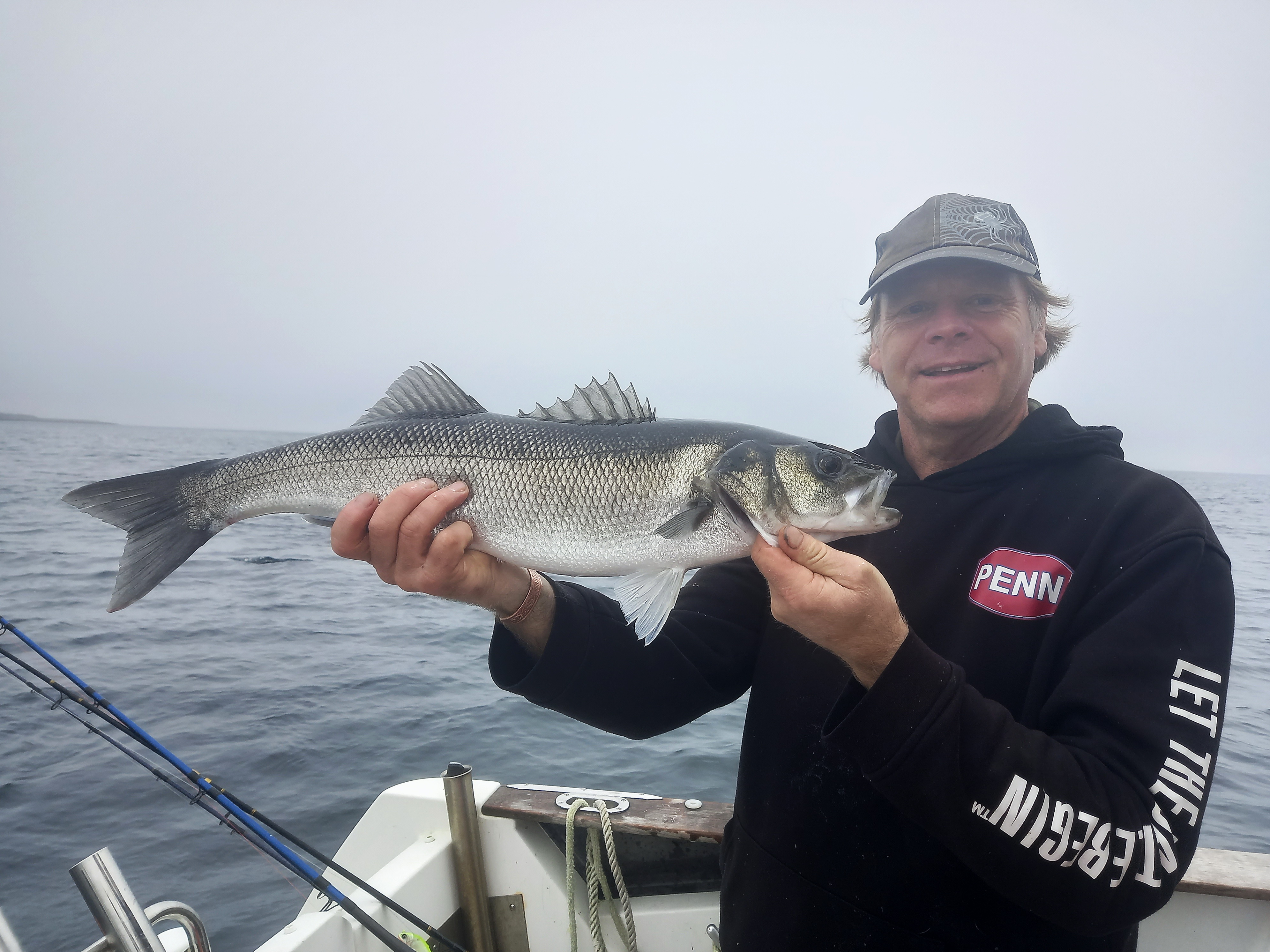
Where to catch
Probably one of our most iconic of all Irish salt-water species, this is a fish that conjures images of wind-swept surf beaches and quiet isolated estuaries. Bass have faced many problems over the years, due to their sought after table qualities and ruthless commercial targeting. However, with reasonable protection in place, they have shown some signs of re-establishing themselves over the past couple of seasons. It is an up-hill struggle to protect our only official sport-fish but it has got to be kept off the commercial nets man’s hit list in order to reach the original population in size and numbers of days gone by!
Bass surround the Irish coast-line in varying degrees of population density, but they are present in most Irish coastal waters, and quite a few that most anglers are un-aware of! Such is the nature of protecting this species, many great captures go un-reported.
Great Bass fishing can be found anywhere from the Dublin shore-line south. The beaches below Dublin produce good Bass angling, down to Wicklow and Arklow, Kilmore Quay and on to famous marks around Waterford and Dungarvan. Articles and even whole books are dedicated to the Bass beaches, headlands and estuaries of the Cork and Kerry coast-line and need no further mention by me. I have also seen Bass taken on the west coast beaches around Mullaghmore, which has been kept reasonably quiet over the years. The north coast is a former shadow of past glories, but still produces “schoolies” and the odd good fish in season. Areas less known and warrant investigation are the shores of County Down. This gap between Dundalk Bay and the Antrim Coast must surely hold fish, but little is known or investigated compared to well known venues.
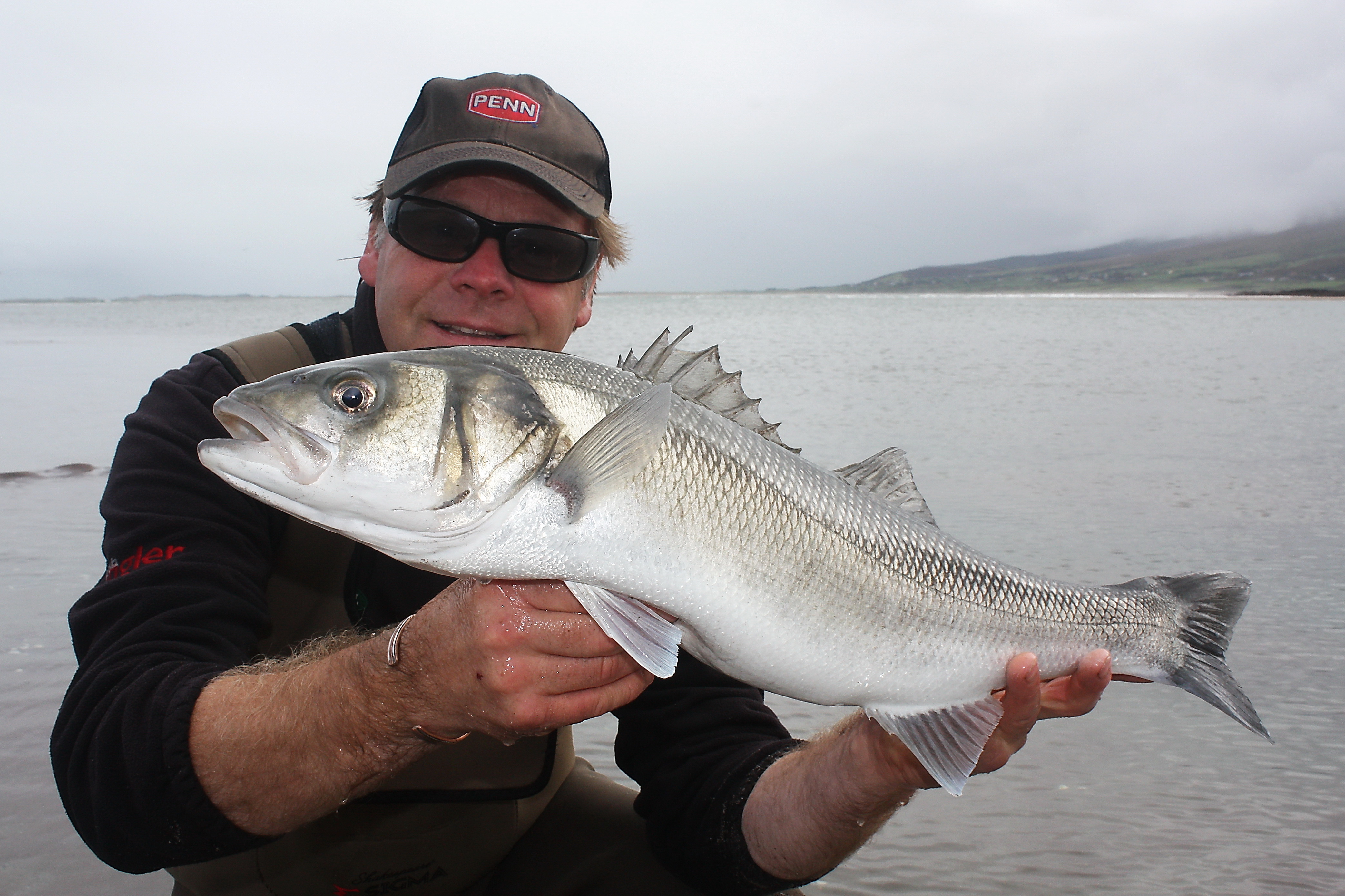
When to catch
I have seen Bass taken in every month of the year, but larger fish tend to show up April-May and later in the year, around October-November. That is not to say you won’t find a double-figure fish at any other time through the season.
Current Bass legislation in Ireland states that there is a limit of two Bass per day per angler, a size limit of not less than 40 cm, and a close season from 15th May-15th June. Any fish accidentally caught during this period must be returned immediately. I believe new legislation will be put in place soon, which I shall up-date, waiting for clarification from Inland Fisheries Ireland regarding this. Bass are slow growing and need maximum protection, practice catch and release wherever possible.
Latest rules and regulations regarding Bass limits, click here...
Bait
Bass are a fearsome predator with a huge mouth capable of swallowing very large baits. They attack sand eels and small fish such as young Mackerel, Whiting and Pouting and often hunt close inshore between the surf tables. Bass will also forage amongst kelp and boulders along rocky headlands seeking out inhabitants such as crabs, butterfish and blennies.
What this means is there is a large array of bait that will catch Bass, depending on the area you are fishing and the conditions experienced on the day. Peeler crab can be deadly in many places with rocky, weedy outcrops, but will also work well on clean, surf beaches. Sand eel is excellent and whole Squid, lugworm, ragworm, Mackerel strip and white ragworm all work well or sometimes just a whole Mackerel head and guts will find the bigger fish. Other exciting methods are spinning with plugs or Tobies on light tackle and also fly-fishing, which is becoming very popular.
Taken on free-lined peeler crab
Methods
Plug fishing, travelling light and constantly on the move gives the angler an opportunity to cover large areas of shore-line, seeking out hunting-feeding fish. Using surface lures is a visual and exciting part of Bass angling. The same can be said of fly-fishing.
Standard shore angling-beach casting is probably the most common method of Bass angling, being on the hot-spot during the correct stage of the tide with fresh peeler crab and lugworm. This can produce superb results as a shoal of feeding Bass pass through.
However, there are so many variants and disciplines to Bass angling, the choice is almost limitless. I haven’t mentioned float fishing the gullies and tidal headlands with Joey Mackerel, crab or live prawns. And then there are the new range of extremely realistic looking artificial eels and bait fish that appear every season. These are responsible for amazing catches of fish each year.
If you wish to Bass fish, pick a discipline that suits you, the angler, or your local area and go for it. Failing that, dive in, so to speak and try all methods, that’s what I prefer!
Bass articles
http://www.angling-ireland.com/free_lined_peeler
http://www.angling-ireland.com/penn_rampage_9_ft_bass_spinning_rod
http://www.angling-ireland.com/abu_nano_rocksweeper_rods




